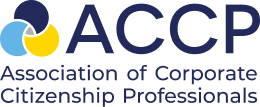Revé Fisher
Content Marketing Manager
True Impact
Imagine a world where you can find the most effective nonprofits serving the causes and communities you care most about. Instead of giving to the same partners over and over again (*cough* your board chair’s alma mater *cough*), you could easily identify the most high-performing organizations aligned with your strategic plans. Social return on investment (SROI) calculations can help.
What is Social Return on Investment (SROI)?
Social return on investment (SROI) quantifies how efficiently philanthropy benefits society. SROI is similar to business ROI, in that they both measure return on investment for every dollar invested. The difference is that ROI measures financial returns to the investor, whereas SROI measures value (or impact) to society. (And to be clear, CSR programs can help move the needle on both!)
To calculate SROI, count the number of successful outcomes a program generates—remember, not every beneficiary served by a program will necessarily be successful—and divide that number by the total cost of implementing that program. The result is the number of successful outcomes per dollar spent. Since one dollar typically has a minuscule impact, we usually multiply the result by $10,000 (i.e., how much success per $10,000 invested) to get a more user-friendly number. For example, if an emergency housing program spent $100,000 and the outcome was 25 people gaining short-term housing, that would be an SROI of 2.5 per $10,000 invested into the program.
Two types of SROI can be applied to prove and improve the impact of your donations:
- Program SROI allows analysis of a program’s efficiency by calculating the cost per successful outcome.
- Donor SROI allows you, as the donor, to analyze your specific investment by calculating the impact you can claim. This is often the same as program SROI but can be greater if the investment is well leveraged (e.g., it is used to attract other donors, build capacity in an organization to increase its efficacy, or establish new models that can be replicated in the future). When your donation catalyzes additional social impact, it increases your donor SROI.
Benefits for Donors and Nonprofits
We believe SROI is best used as a flashlight (to illuminate), not a hammer (to punish). When used well, SROI can showcase your hard work, help you operate more strategically, and offer insights to extend your impact and help more people. Here are five ways to use SROI:
- Increase credibility. Proven results provide evidence that your work is making a measurable impact.
- Promote accountability. Include metrics in communications to increase transparency and trust with your stakeholders.
- Improve decision-making. Data-driven decisions backed by quality metrics can improve your funding, management, and operations.
- Drive improvement. SROI offers insights into what’s working and what’s not, especially among nonprofits in the same sector.
- Measure growth. Tracking SROI enables nonprofits to quantify how much they enhance their impact over time.
Not Apples to Apples
Although SROI is a valuable tool, not all SROI metrics are the same, and it would be nice to simply rank the SROI of your nonprofit partners and increase funding to the ones with the best scores, but unfortunately, it’s not quite that simple. Understanding the details of the programs—such as the type of intervention, demographics, geographical region, and target outcomes—allows you to put their efficiency into context and interpret the extent of their impact.
Getting a handle on SROI can propel your philanthropy so you can invest with purpose. If you’d like to learn more about using SROI to maximize your giving, tune in to True Impact’s webinar at the ACCP Annual Conference—SROI: Moving from Money Pits and Fairy Dust to Purposeful Investing. We’ll offer best practices for applying SROI to your CSR programs, tips to prevent it from becoming the next overhead myth, types of contexts to keep in mind, and questions to help you use SROI to do your best work.

